Beebalm, skullcap, and more wild creatures
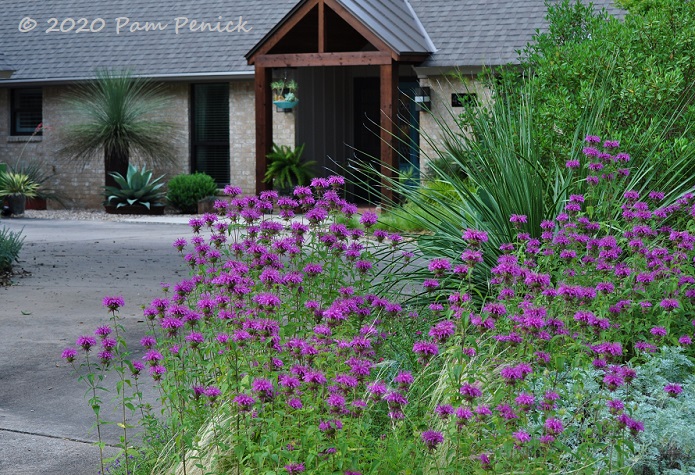
The early summer flowers are strutting their stuff, so come along for a virtual tour! Here’s dazzling ‘Peter’s Purple’ monarda (Monarda fistulosa ‘Peter’s Purple’) in the driveway bed.
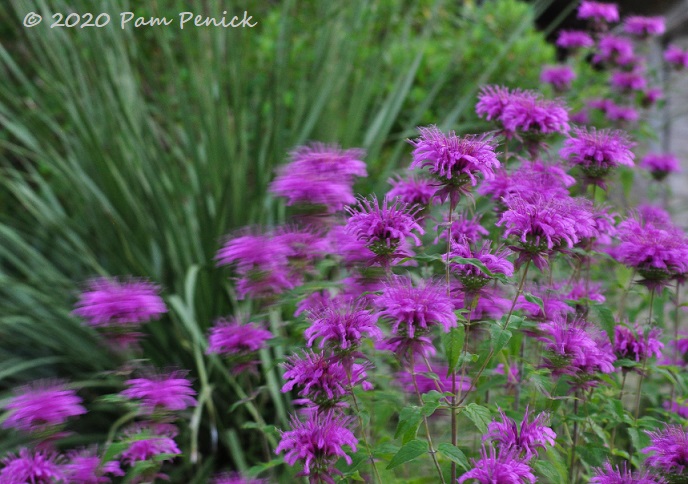
It was a breezy day.
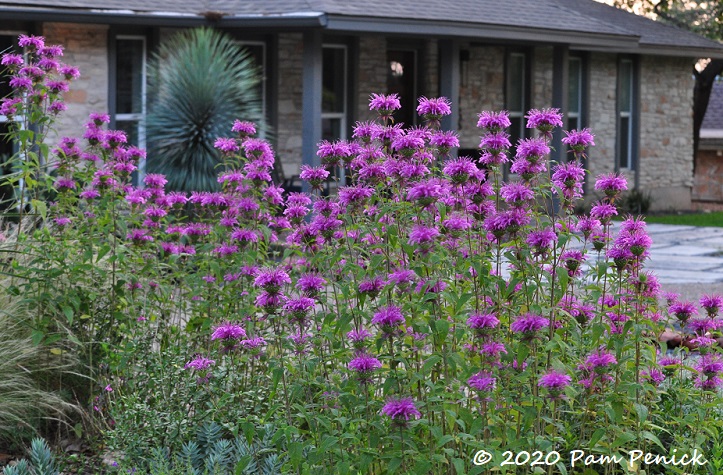
Looking toward the neighbors’ house and their fast-growing Yucca rostrata
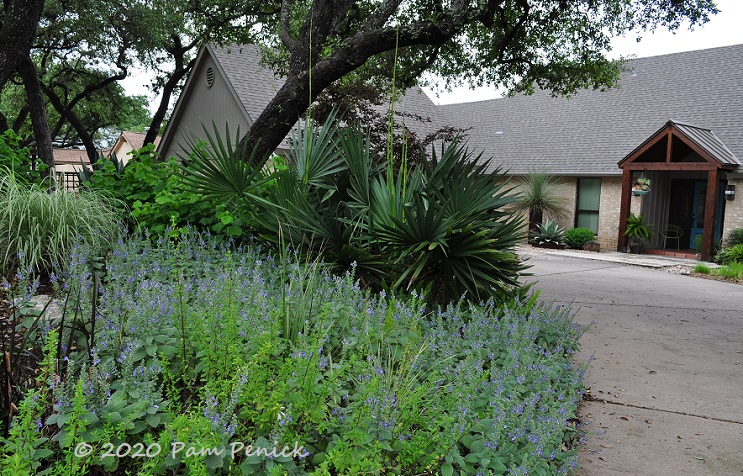
In the shady island bed along the driveway, native heartleaf skullcap (Scutellaria ovata) paints a softer picture.
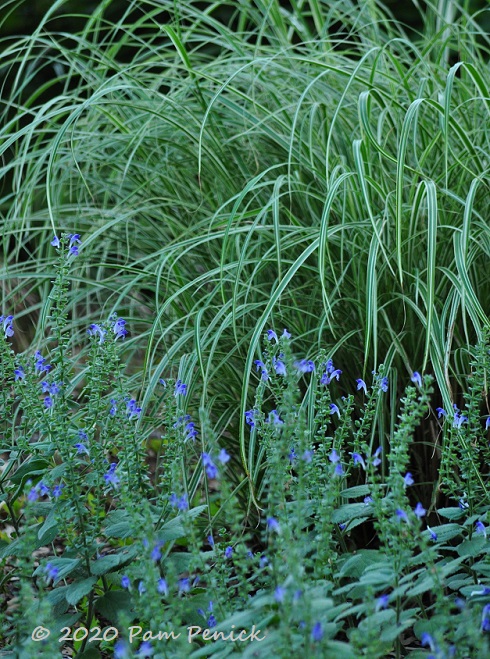
It looks great with fine-textured variegated miscanthus.
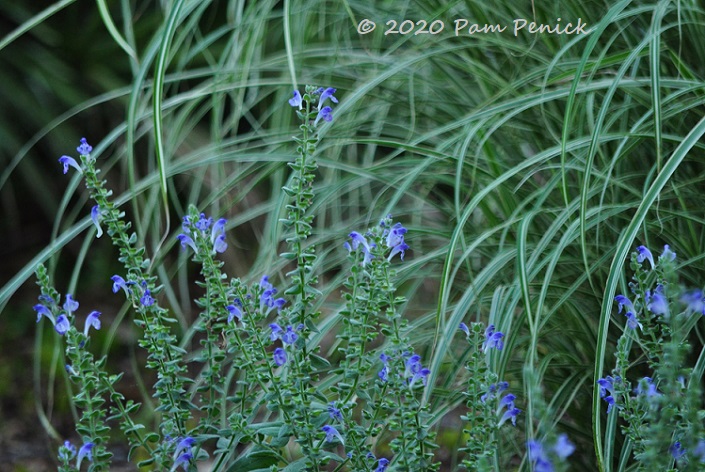
A closer view
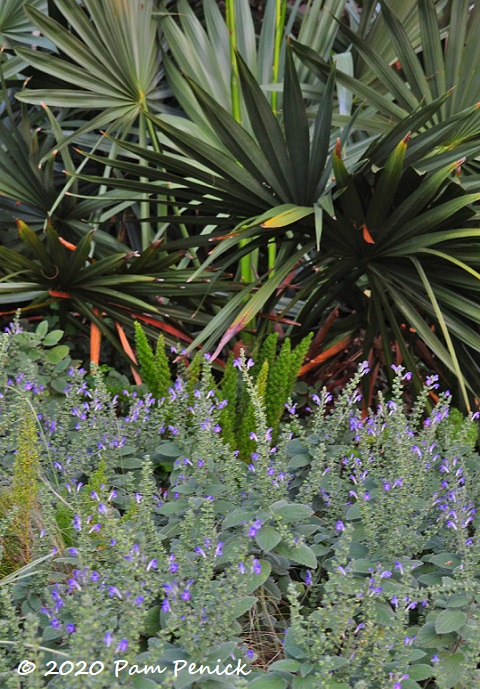
But also — this time in late-afternoon light — with bold-textured Texas dwarf palmetto (Sabal minor), another native plant.
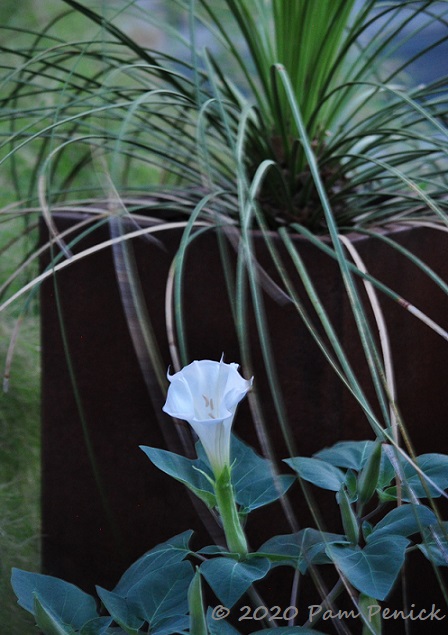
Sacred datura (Datura wrightii) unfurls glowing white blossoms as evening comes on.
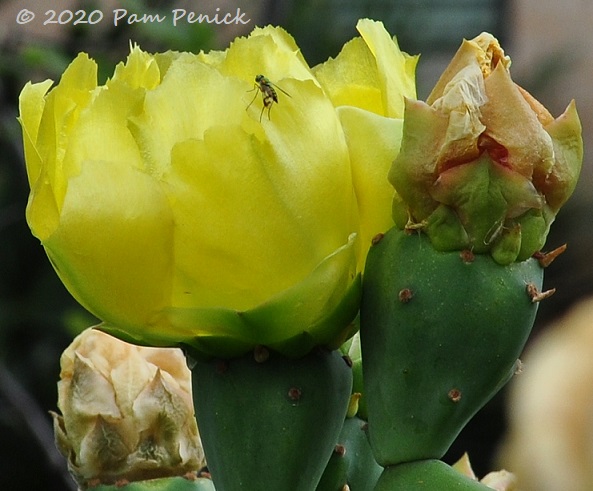
By day, ‘Old Mexico’ prickly pear is still popping out a few flowers.
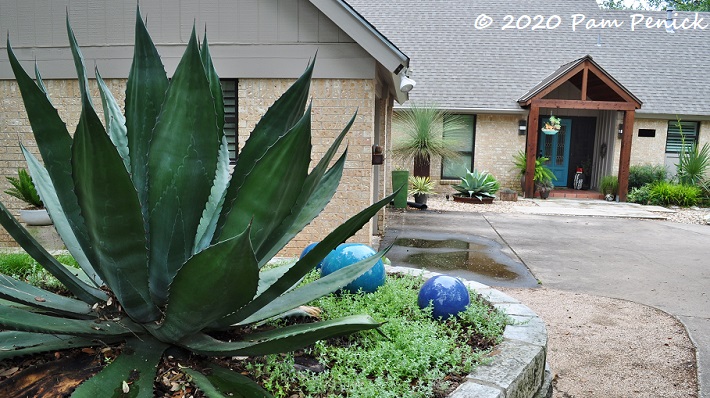
The sawtoothed, dusty blue-green leaves of ‘Green Goblet’ agave (Agave salmiana var. ferox ‘Green Goblet’) greets visitors along the other side of the circular drive.
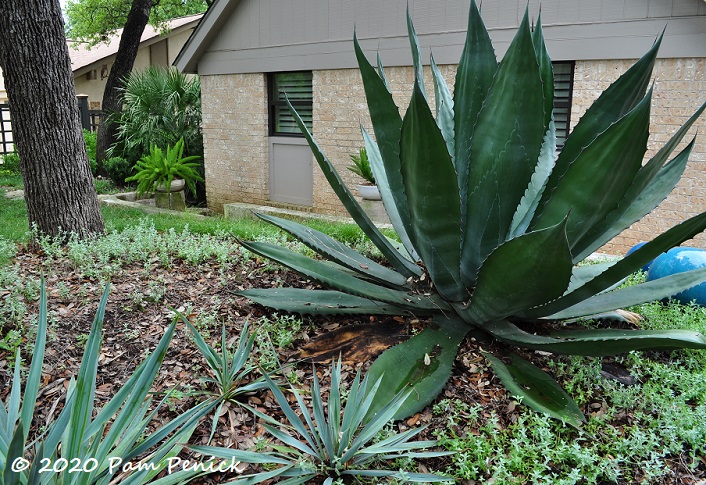
It’s underplanted with two hardworking natives: paleleaf yucca (Yucca pallida) and woolly stemodia (Stemodia lanata).
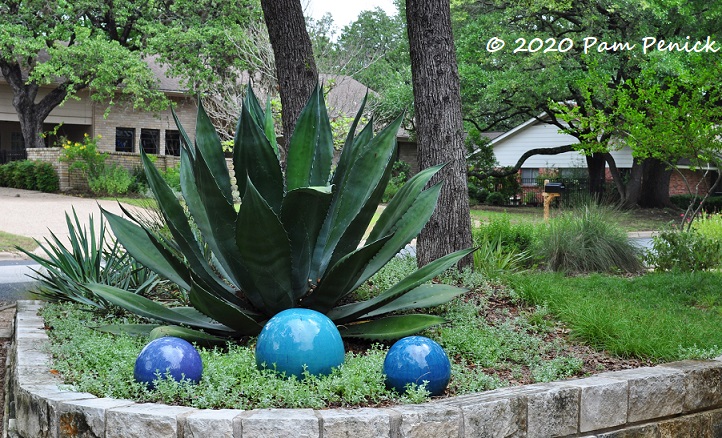
A few blue ceramic balls carry along the color scheme.
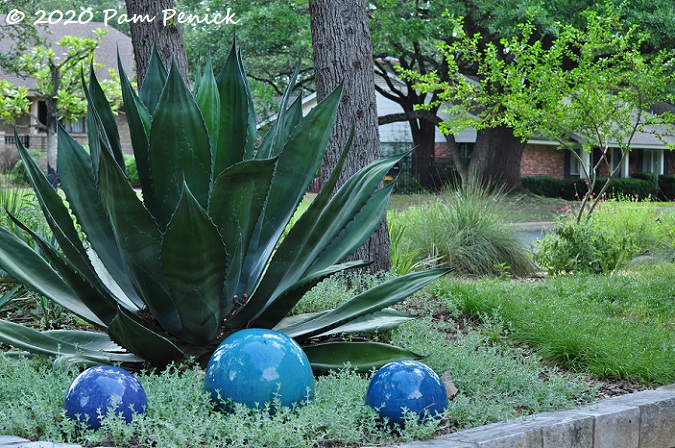
The woolly stemodia thrives where there’s more sun. In the dappled shade of the live oaks, Berkeley sedge (Carex divulsa) makes a meadowy lawn substitute.
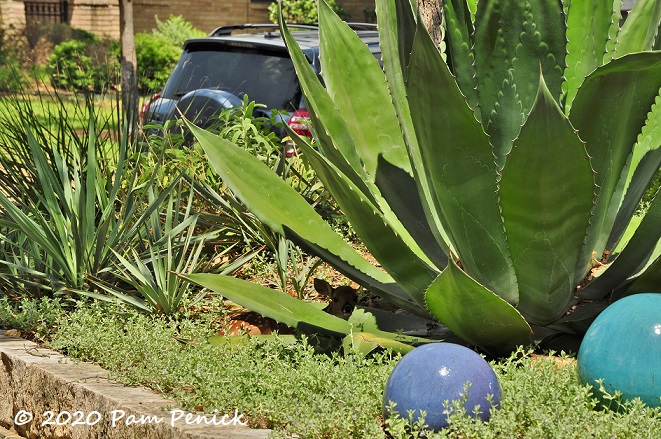
The ‘Green Goblet’ agave caused some concern a few days ago. Do you see what I’m talking about?
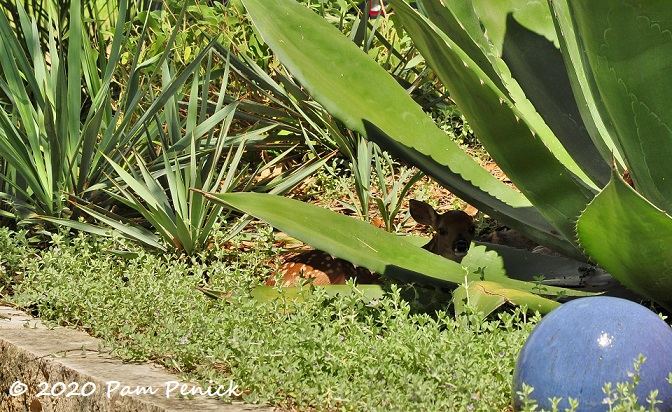
My daughter and I were loading the car with items for Goodwill, oblivious to the fawn tucked under one thorny agave leaf. When we hopped in the car and started the engine, the sound or activity flushed the fawn from its hiding spot, but its gangly legs got hung up in the thorny leaves as it tried to flee.
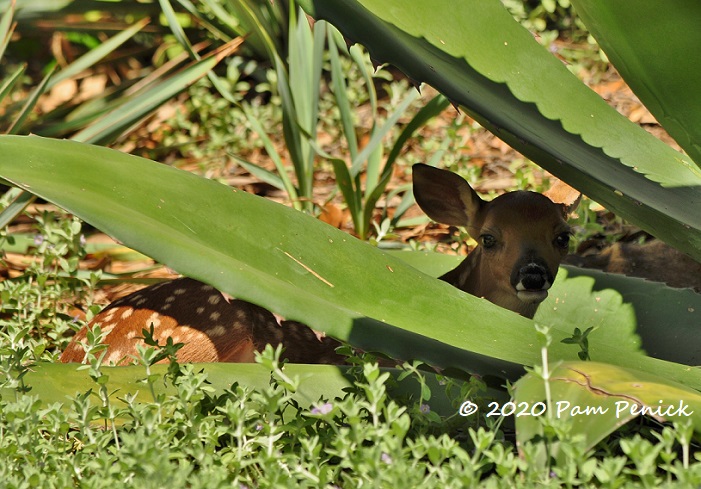
We gasped in horror and slowly backed the car away, which calmed the fawn. As we drove off we could see him settling back down among the leaves, which mama deer must have decided was good protection when she left him there. Later I snapped a few photos from a non-threatening distance.
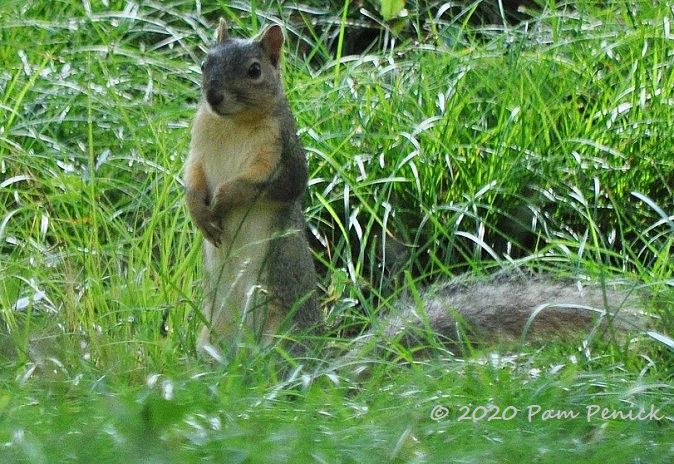
Other creatures are less wary and more curious.
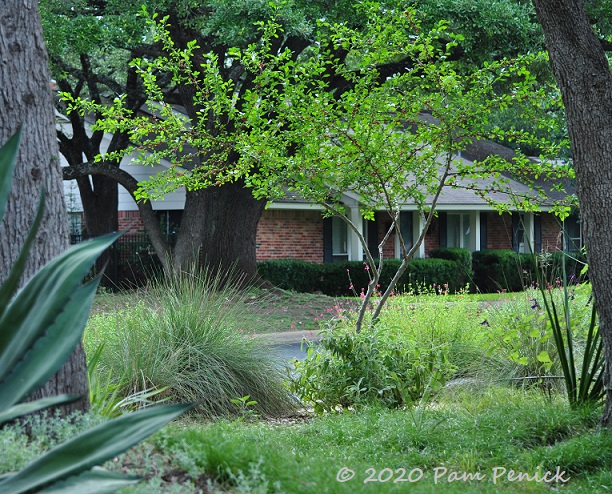
The possumhaw holly (Ilex decidua) leans gracefully in the streetside bed.
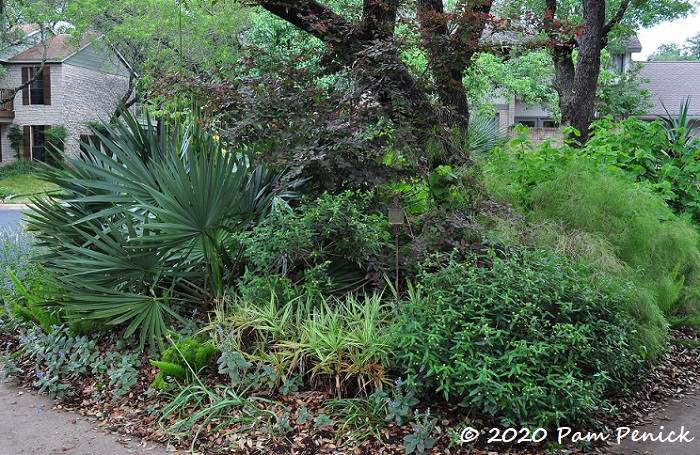
In the center of the circular drive, the island bed has achieved a nice fullness, at least from this angle, which is our view from the front door. The plants do a good job of screening the street view. Now that seemingly everyone has a Ring camera on their front porch, I like having some privacy out front, plus the island bed screens parked cars from view too.
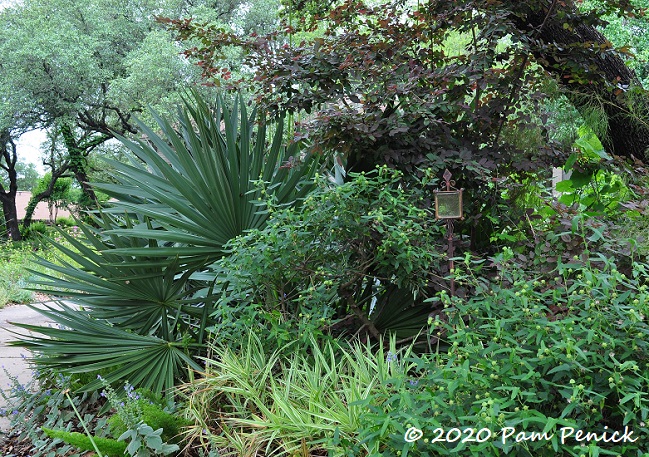
Texas dwarf palmetto, ‘Sparkler’ sedge, pale pavonia (Pavonia hastata), and loropetalum are some of the shade lovers thriving under the live oaks.
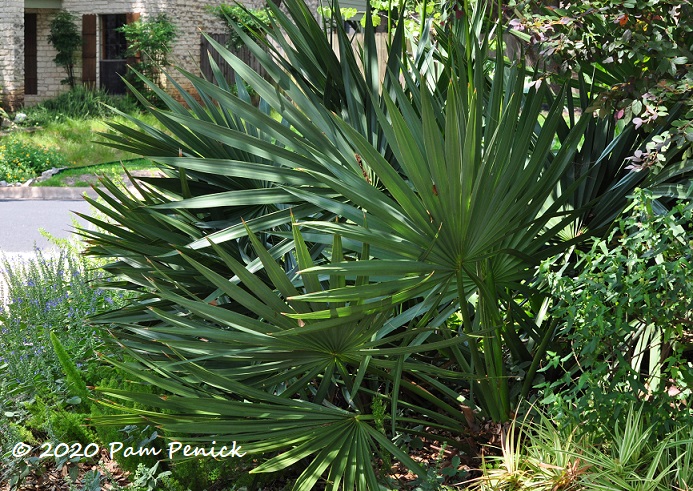
Texas dwarf palmetto doing its fan dance
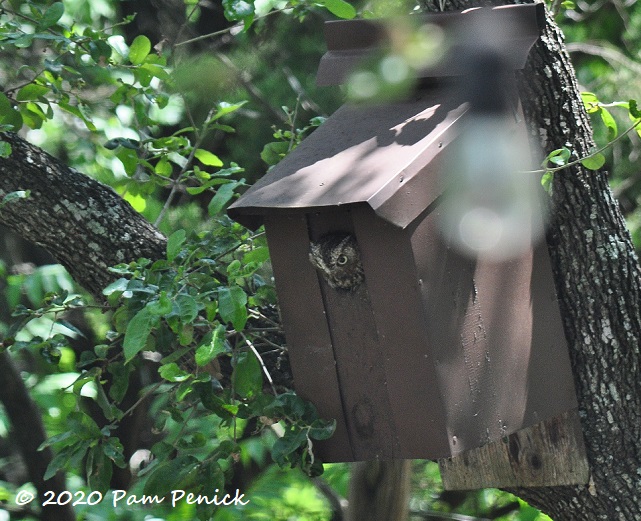
In the back garden, our little screech owl occasionally shows itself.
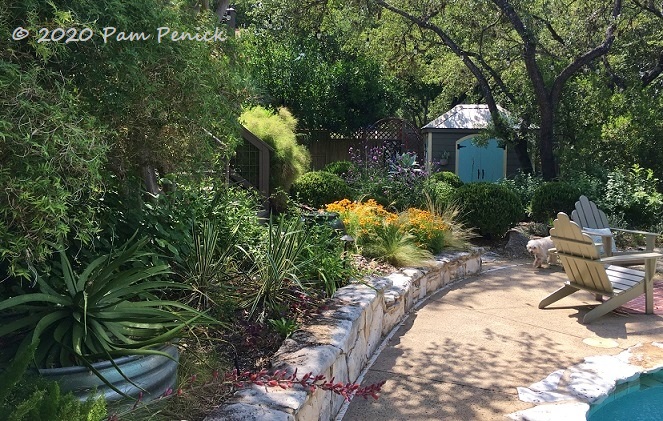
And I’ve been enjoying the newly colorful view of the Circle Garden.
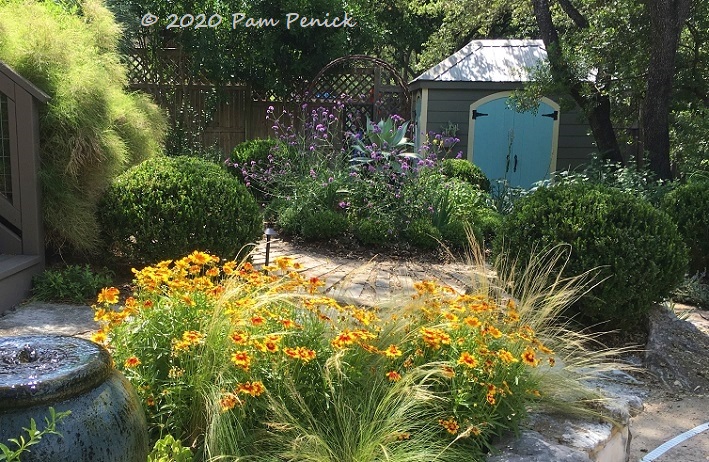
‘Sterntaler’ coreopsis makes the biggest splash right now, dancing with Mexican feathergrass for a very Hill Country look. Looking past the ‘Winter Gem’ boxwood balls…
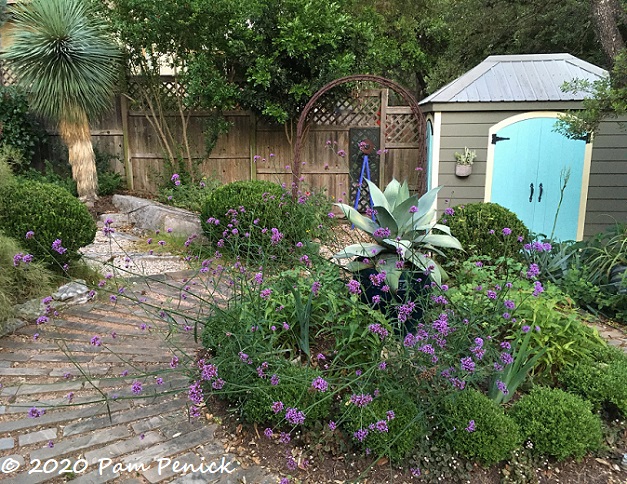
…tall verbena (Verbena bonariensis) sprawls across the path in an effort to reach more sunlight. Romantic but impractical, so I recently trimmed the horizontal stems back to the circle of ‘Micron’ hollies. A whale’s tongue agave (A. ovata) regally presides over the scene in her blue pot.
__________________________
Digging Deeper
Come learn about gardening and design at Garden Spark! I organize in-person talks by inspiring designers, landscape architects, authors, and gardeners a few times a year in Austin. These are limited-attendance events that sell out quickly, so join the Garden Spark email list to be notified in advance; simply click this link and ask to be added. Season 8 kicks off in fall 2024. Stay tuned for more info!
All material © 2025 by Pam Penick for Digging. Unauthorized reproduction prohibited.


You garden is both exciting and peaceful…I bet you don’t miss the stock tank at all! The Whale’s Tongue looks great there.
Thanks, Gail. I love the new plantings in the Circle Garden, and while I also loved the stock-tank pond for 11 years, I’m enjoying the new scenery.
How I admire that Monarda! I got hold of 3 plants by mail order last year and I’m glad to see them coming back this year, although I doubt I’ll ever have a display like yours. I’m pleased the fawn made it through his unexpected ordeal – and that you did too.
If the monarda does take hold — and maybe it just needs a year or two to get established — you’ll have an abundance. It spreads easily in my garden, but it’s not too aggressive to cause problems.
Just lovely as always! Thank you for sharing.
Aw, thanks, Cynthia!
I am interested in what you have in the shady island bed along the driveway when the heartleaf skullcap goes dormant in the summer. I have a healthy stand of these under my cedar elm trees and they disappear during the summer and return the following year. I am struggling with what to pair these with that will fill in when they are dormant.
Thanks for sharing your beautiful grounds.
Plant Turk’s cap behind your heartleaf skullcap, Denise. By the time the skullcap is done, the Turk’s cap is ready to spread out and take off for summer. And if you’re in-town (where it’s warmer), add a few foxtail ferns amid the skullcap to have something of interest when the skullcap dies back.
That sounds perfect. Thanks for the suggestions.
awww, that little fawn is so sweet. I hope it didn’t get hurt jumping up under the spiky leaves. You can hurt squirrels unless you run over them, the rascals.
The skullcap is really pretty.
I don’t blame you for wanting a bit of privacy. I love the view you have created.
I think the fawn is fine. We’ve seen it around since then with its mama. 🙂
Hello- I just wanted to say I really enjoy reading your posts and love your style of gardening. It is a very different to what we can grow in the UK. I also enjoy seeing all the wildlife that your garden attracts! How amazing you have the fawn in your garden and a sweet little screech owl! Do you get many amphibians or reptiles there? I love frogs and toads but possibly its a bit dry for them where you are? Stay safe and happy gardening!
Thanks for your comment, Owen. I do see an occasional tree frog or toad, and we have lots of lizards and the occasional snake (mostly harmless garter or rat snakes, but once a coral snake). It’s a jungle out there, even in suburbia!